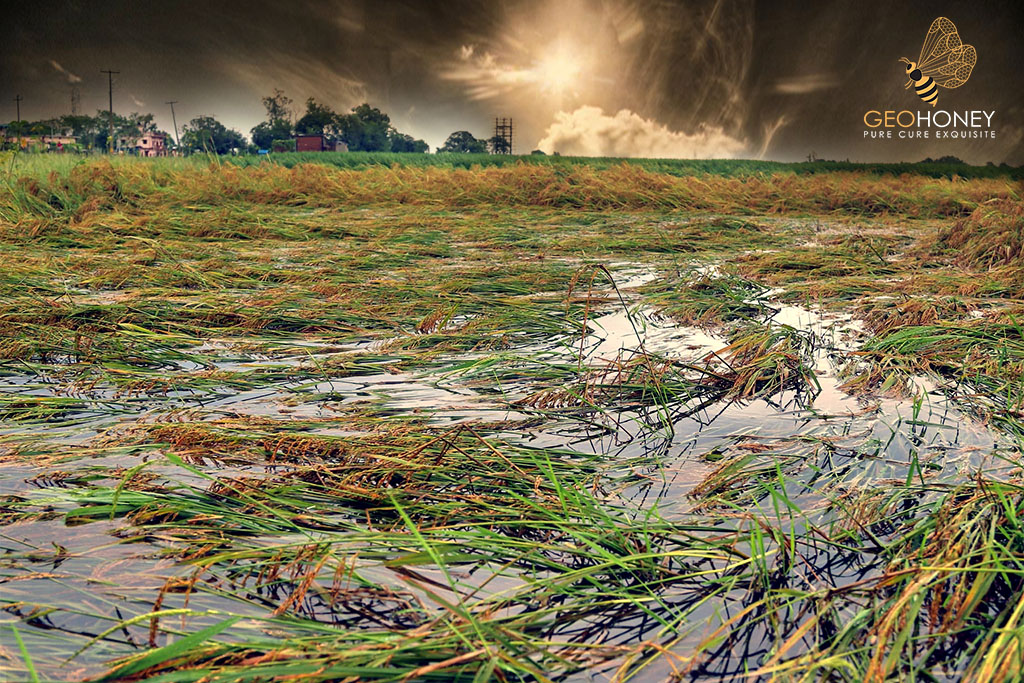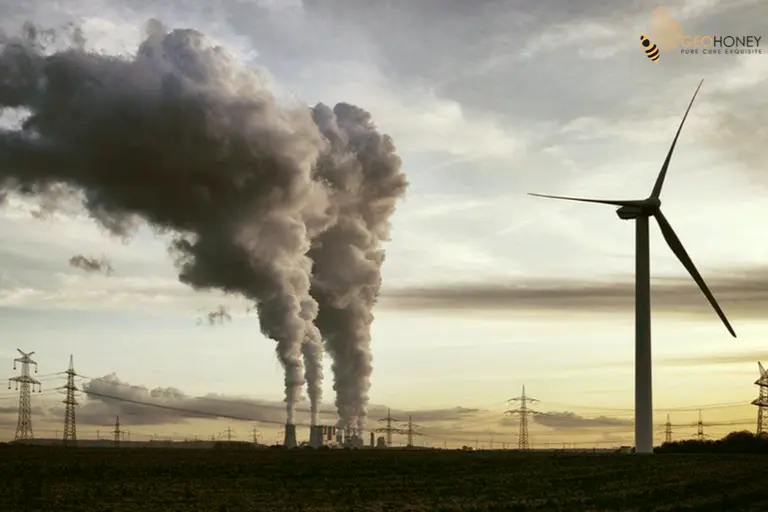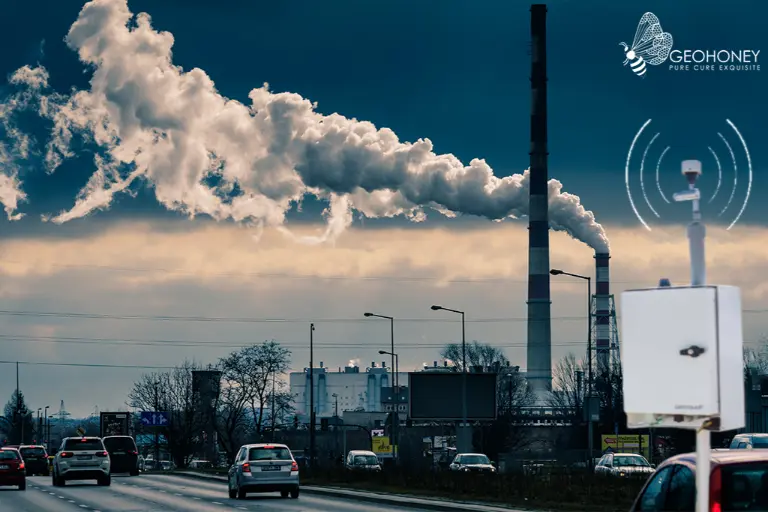- Tokyo: 13:28
- Singapore: 12:28
- Dubai: 08:28
- London: 04:28
- New York: 23:28
Addressing the Impact of Climate Change on Agricultural Losses

Floods are a recurring natural disaster in Sindh, particularly in the twenty-first century. The province is known for its hot and arid climate, but in recent years, its weather patterns have shifted, with more frequent and intense drought and rainfall events.
This shift is thought to be the result of climate change, which is raising global temperatures and altering weather patterns around the world. Despite contributing less than 1% of global greenhouse gas emissions, Pakistan is one of the countries most severely impacted by extreme weather events caused by climate change.
During the last 25 years, Sindh has been the only province in Pakistan to experience all major types of floods, including river, flash, urban, and coastal floods. The frequency of floods has increased over time, causing economic and human losses in Sindh.
The 1999 Cyclone ARB 02 was a devastating natural disaster that struck the coastal regions of Sindh, killing hundreds of people and causing economic losses in the millions of dollars. Other major cyclones that flooded Sindh's coastal belt and caused severe human and economic loss included Onil in 2004, Yemyin in 2007, and Phyan in 2009.
Major natural and anthropogenic challenges to Sindh's deltaic region include sea level rise, land subsidence, coastal erosion, land degradation, and seawater intrusion.
Pakistan is extremely vulnerable to the effects of climate change. Despite being one of the world's lowest carbon emitters, Pakistan was ranked as one of the most vulnerable countries to climate change and extreme weather events in the Global Climate Risk Index 2021.
Sindh experienced dry years in the early twenty-first century, but wet years later, during which the province experienced the devastation of the floods of 2010, 2011, 2020, and 2022. Flooding in 2010 was a river flood, rain flooding in 2011, an urban flood in 2020, and a rain and flash flood in 2022.
Heavy rains lashed northern Pakistan in 2010, causing high flood levels in the Indus River. The river flow situation was exacerbated further when ungauged runoff from Koh-e-Sulman entered the river flow.
With 1.15 million cusecs of flow, the supper flood condition resulted in river levee breaches in two locations: Tori in upper Sindh and Kot Almo in lower Sindh. It flooded approximately 1.04 million hectares of agricultural land, resulting in significant loss of life, property, and infrastructure.
During monsoon 2011, many districts in lower Sindh received above-average rainfall, including Umerkot, Mirpurkhas, Sanghar, and Badin. It inundated vast areas of these districts, resulting in significant crop, property, and life loss. For more than four months, many areas were underwater, pushing many people below the poverty line. This was the first time sailing boats were seen in Mithi town, which is located in the middle of the Thar desert.
Karachi experienced the worst urban flooding in nearly a century in 2020. The floods were caused by heavy monsoon rains that were not adequately drained by the city's poorly maintained drainage systems. The resulting floods killed people and destroyed the city's infrastructure and properties.
Sindh experienced one of the worst floods in its history last year. Climate change caused unprecedented rainfall, which caused the flood. Millions of people were affected by the flood, which displaced thousands of families and caused extensive damage to homes, infrastructure, and crops.
Rainfall in the province was unprecedented, with up to 1,763 mm recorded at the Padidan meteorological station. The most monsoon rainfall was recorded in Sindh's central districts, specifically Naushehro Feroz, Larkana, and Khairpur. This is due to a shift in the monsoon rainfall pattern from lower Sindh to central and upper Sindh.
Sindh's monsoon rainfall volume was estimated to be 79 million acre-feet (MAF). Furthermore, approximately 8 MAF runoff made its way to Sindh, inundating vast areas of the province. The flood of 2022 is thought to be the worst flood that Sindh has ever seen.
Pakistan has taken steps to combat climate change, including signing the Paris Agreement in 2016. However, more must be done to reduce greenhouse gas emissions and mitigate the effects of climate change.
To reduce the country's reliance on fossil fuels, the government should invest in renewable energy and promote sustainable development practices. Other measures, in addition to addressing climate change, should be taken to prevent floods in Sindh.
The government should invest in flood-prone infrastructure such as check/small dams, river levees, drainage networks, and the revitalization of natural waterways (dhoras).
It is also critical to develop early warning systems to alert communities of impending floods, as well as to ensure that emergency response plans are in place to assist affected communities, particularly in Katacha, Kachho, and coastal areas.
In Sindh, deforestation is a major cause of flooding. As a result, efforts should be made to reforest (both mangrove and inland) to help absorb excess water and reduce the risk of flooding.
The Johi branch canal is a major impediment to the natural flood flow to Manchar Lake, resulting in the inundation of the towns/talukas of Mehar and Khairpur Nathan Shah. As a result, constructing underpasses for the Johi branch canal between the Main Nara Valley Drain and the Flood Protective Bund will reduce the risk of flooding in those towns.
To summarise, mitigating the impact of floods in Sindh necessitates a multifaceted approach that includes infrastructure investment, improved early warning systems, and increased public awareness. The government and communities must collaborate to put these measures in place and ensure Sindh is better prepared for future floods in the face of changing climate change scenarios.
Source: dawn.com




Natural disasters are unavoidable, we should be prepared instead. We should not be oblivious that this natural calamity can come at anytime.
Every day we are encountering the effect of this climate change to us, but we are just neglecting it, and worst we are ignoring it.